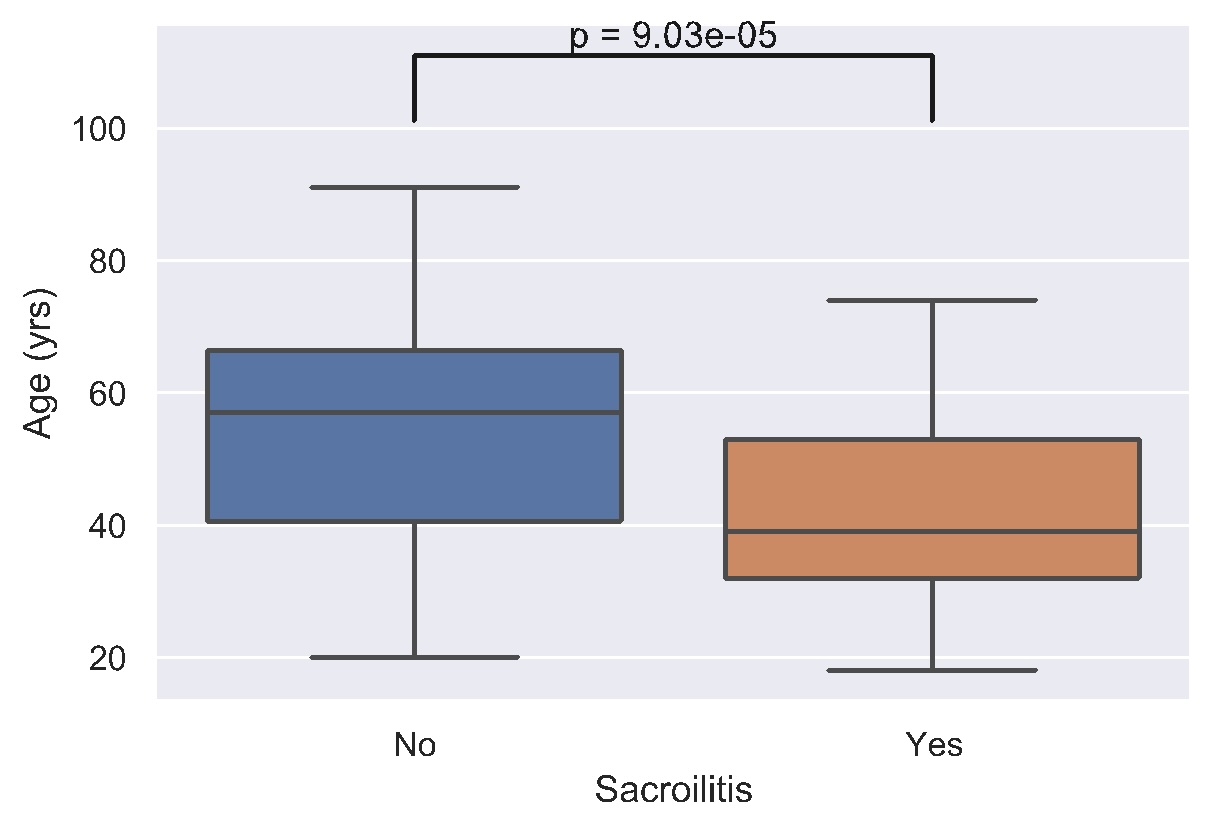Session Information
Date: Saturday, November 16, 2024
Title: Imaging of Rheumatic Diseases Poster I: Inflammatory Arthritis
Session Type: Poster Session A
Session Time: 10:30AM-12:30PM
Background/Purpose: Spondyloarthropathy (SpA) encompasses several conditions, such as ankylosing spondylitis, psoriatic arthritis, reactive arthritis, arthritis linked with inflammatory bowel disease, and undifferentiated spondyloarthritis [1]. Sacroiliitis is considered a diagnostic criterion for axial SpA [2]. During the active phase of inflammation, periarticular bone marrow edema is a prominent feature and detectable via MRI. Its presence plays a crucial role in determining the appropriate treatment. This study aims to assess the diagnostic efficacy of incorporating gadolinium and determine whether gadolinium-enhanced MRI images increase the diagnostic accuracy of MRI examinations.
Methods: The study utilized the EMR system to generate a patient list, which included patients aged 18 years and older diagnosed with SpAs who had undergone MRI of the pelvis in a 5-year period between January 2019 and December 2023. Patients were categorized into two groups: those who underwent pelvic MRI without gadolinium and those with/without gadolinium. The MRI findings were evaluated to determine the presence of bone marrow edema and sacroiliitis.
A Chi-square test was utilized to delineate the relationship between groups and each of the binary outcomes. We also analyzed differences between the patients with positive and negative MRI findings for sacroiliitis by comparing several age groups using Python-based chi-square and least squares statistics (www.statsmodels.org, v0.14.1) and Python v3.7.4 (www.python.org) [3].
Results: Over the course of a five-year period, 2836 individuals were diagnosed with SpAs. Among them, 176 patients underwent pelvic MRI, with 114 of those receiving MRI with/without contrast agents and 62 patients undergoing MRI scans without contrast. No patients received MRI scans with contrast only. Sacroiliitis was identified in 27 patients (37.5%) who underwent MRI with/without contrast and in 18 patients (37.5%) who underwent MRI without contrast, based on radiologists’ interpretation (Table 1).
We found that the positive MRI group was significantly younger than the negative MRI group (Figure 1). In addition, the ordinary least square model showed that a contrast-enhanced MRI did not significantly change the rate of positive MRI findings. However, the use of biologic medications and patients age were significantly correlated with positive findings on MRI (Table 2). Notably, we would expect a discordant p-value between the age variable in Table 2 and Figure 1 as the ordinary least squares methodology incorporates multiple variables that change the effect size.
Conclusion: MRI stands as a highly sensitive modality for the detection of active sacroiliitis in SpA. Notably, MRI without contrast proves effective in discerning bone marrow edema, a hallmark feature indicative of active sacroiliitis. The utilization of gadolinium-enhanced MRI made no significant difference in diagnostic determination. We also found that younger age and the use of biologic medications were correlated with positive MRI findings of sacroiliitis.
To cite this abstract in AMA style:
Sereda D, Venkataraman A, Stock H, Perl A. MRI of Sacroiliac Joints: Is Contrast Necessary for the Detection of Sacroiliitis? [abstract]. Arthritis Rheumatol. 2024; 76 (suppl 9). https://acrabstracts.org/abstract/mri-of-sacroiliac-joints-is-contrast-necessary-for-the-detection-of-sacroiliitis/. Accessed .« Back to ACR Convergence 2024
ACR Meeting Abstracts - https://acrabstracts.org/abstract/mri-of-sacroiliac-joints-is-contrast-necessary-for-the-detection-of-sacroiliitis/



